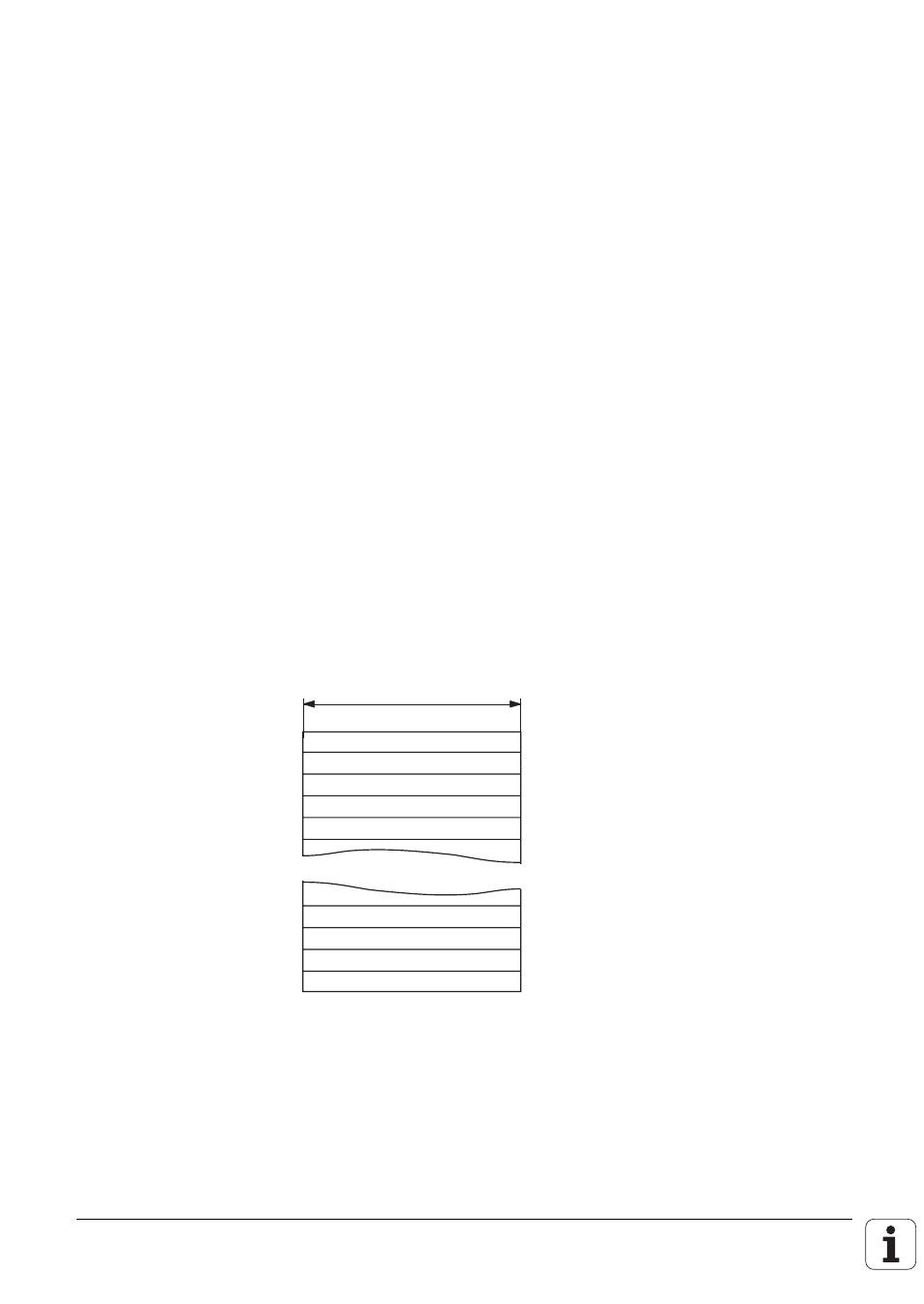2 address allocation, 1 operand directory, 2 addressing the memory – HEIDENHAIN TNC 407 (243 020) Technical Manual User Manual
Page 479: 2 address allocation 2.2.1 operand directory

2.2 Address allocation
2.2.1 Operand directory
Operand
Abbreviation
Address range
Marker
M (Marker)
0 to 3023
Input
I (Input)
I0 to I31; I128 to I152;
I64 to I126 (first extension board);
I192 to I254 (second extension board)
Output
O (Output)
O0 to O30;
O32 to O62(first extension board);
O64 to O94 (second extension board);
Counter
C (Counter)
Set counter : C0 to C31
Counter contents: C48 to C79
Release count pulse: C96 to C127
Timer
T (Timer)
Timer start: T0 to T47
Timer running: T48 to T95
Byte
B (Byte)
0 to 1023 (8 Bit)
Word
W (Word)
0 to 1022 (16 Bit)
Doubleword
D (Doubleword)
0 to 1020 (32 Bit)
Constant
K
- 2 147 483 647 to + 2 147 483 647
2.2.2 Addressing the memory
The memory for the Operands B (8 Bit), W (16 Bit), D (32 Bit) is only 8 Bit wide. Since the Operands
can be 8,16 or 32 Bit wide, an overlap of the memory areas will occur, which must be taken into
account in addressing the memory.
8 bit
0
7
B0
B1023
B1022
B1021
B1020
D1020 W1020
B1
B2
B3
B4
B5
W0
D0
W2
W4
D4
W1022
..
.
..
.
..
.
..
.
➞ High-Byte for W; Highest-Byte for D
➞ Lowest-Byte for D
➞ Low-Byte for W
In Byte addressing every address from 0 to 1023 is accessible. In Word addressing, every second
address from 0 to 1022 is accessible and in Doubleword addressing every fourth from 0 to 1020.
The address parameter gives the High Byte for a Word Address (W) , or the Highest Byte for a
Doubleword address (D).
